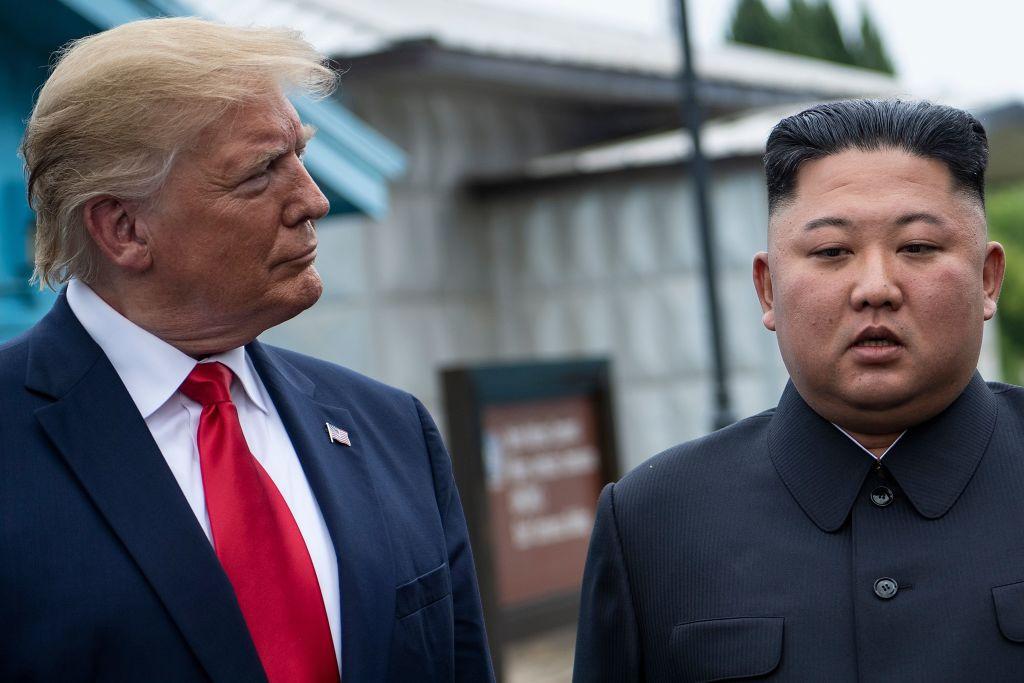
Russian President Vladimir Putin’s visit to Pyongyang in June and North Korea’s announcement this month of tests of new missiles have raised alarms in Washington, rattled America’s allies and threaten to destabilise the Indo-Pacific region. While this certainly is not the first time that tensions have escalated, the current turmoil can be traced back to the actions of one man: former US President Donald Trump.
During his presidency, Trump’s attempts at diplomacy were often viewed as ill-informed and dangerous, especially when he and North Korean dictator Kim Jong-un exchanged nuclear threats in 2017. Yet, Trump and Kim, who met for two summits in 2018 and 2019, actually made significant progress towards resolving the decades-long conflict between their two countries—until Trump’s impulsiveness derailed these efforts and set the stage for escalation.
Seeing a chance to shine on the international stage and win a Nobel Peace Prize like his predecessor, Barack Obama, Trump pushed for a summit with Kim. This also reflected a stark reality. In their first and only meeting after Trump’s election, Obama warned that North Korea was on the verge of acquiring missiles and bombs capable of killing millions of Americans. Obama also told Trump that the US might have to launch a preemptive strike to prevent this scenario.
Trump’s offer to meet Kim was a dream come true for North Korea, signifying its acceptance on the world stage. Kim, like his father and grandfather, sought to modernise the country’s underdeveloped economy. An end to the cold war with the US, and resulting opportunity for North Korea to transfer resources from defense to the civilian economy, was crucial to this process. To achieve it, Kim was even willing to put his nuclear-weapons program on the chopping block.
Even as they were issuing public threats, Trump and Kim were secretly angling for a summit. Immediately after Trump took office, the North Koreans reached out to the State Department, signaling Kim’s desire to meet the new US president. During secret talks in Singapore, North Korean spies reportedly asked their CIA counterparts whether Trump was serious about meeting Kim.
Although the Trump administration’s official policy was to force the North Koreans to come to the negotiating table, the president liked the idea of a leader-to-leader summit. In December 2017, he even provided a United Nations envoy with a message for Kim, proposing a meeting.
Whether Trump knew it or not, engaging directly with Kim was the only way to stop North Korea from amassing more weapons of mass destruction. While observers were dismissive of these efforts, Kim’s unilateral decision to halt missile and nuclear-weapons tests and start dismantling test sites showed he was serious. Notably, Kim also announced a major economic-modernisation program, indicating his expectation that the US-North Korea conflict would soon end.
But ending decades of hostility cannot be achieved in a few hours, and the first Trump-Kim summit in June 2018 in Singapore fell far short of such unrealistic expectations. Trump himself seemed to realise this, telling his aides that it was a ‘process’ that might require several summits.
He was right. While Trump was criticised for being unprepared for his second meeting with Kim in Hanoi in February 2019, the summit was preceded by intense negotiations between Trump’s special envoy, Stephen Biegun, and his North Korean counterparts. According to former US officials, the talks produced a lengthy document that addressed nearly every issue the two countries had struggled with, leaving two major questions for Trump and Kim to resolve: how much of North Korea’s nuclear program would be dismantled immediately and how many sanctions the US would lift in return.
Trump and Kim came close to resolving these issues, but Kim’s demands exceeded what Trump was willing to offer. The two haggled until Trump, who is known for his impatience, abruptly decided to cut the summit short.
Regrettably, Trump’s impulsive decision came just as the negotiations were gaining momentum. After the formal talks had ended, a top Kim adviser approached Biegun with a new, promising proposal. The two seemed to be making progress as Trump walked by, shook Kim’s hand, and left, despite Kim’s request that he stay a few more hours. The American delegation had no choice but to follow Trump, and the stunned Kim returned to Pyongyang empty-handed.
At the time, many experts believed that the summit failed because Kim was not willing to give up his stockpile of nuclear weapons. Some thought that John Bolton, Trump’s hawkish national security adviser, had sabotaged the talks, while others noted that Trump was likely distracted by the congressional testimony of his former lawyer, Michael Cohen. But the blame lies squarely with Trump himself. As Anthony Fauci, the former director of the National Institute of Allergy and Infectious Diseases, put it, Trump’s attention span is ‘a minus number’.
Trump himself may have had second thoughts about walking out of the Hanoi summit. As he left Vietnam, he reportedly called then-South Korean President Moon Jae-in and sought his advice. But Trump and Kim never reconnected.
This raises the question: What if Trump had reached a historic deal with Kim in Hanoi? It is probably safe to say that the US and North Korea would have made significant, albeit slow, progress towards better relations. If they had, it is also likely that Kim would not have jeopardised his new relationship with the US by embracing Putin, nor would he be building an enormous weapons arsenal that threatens to annihilate American cities. Alas, because of Trump’s rash decisions, we will never know what could have been.